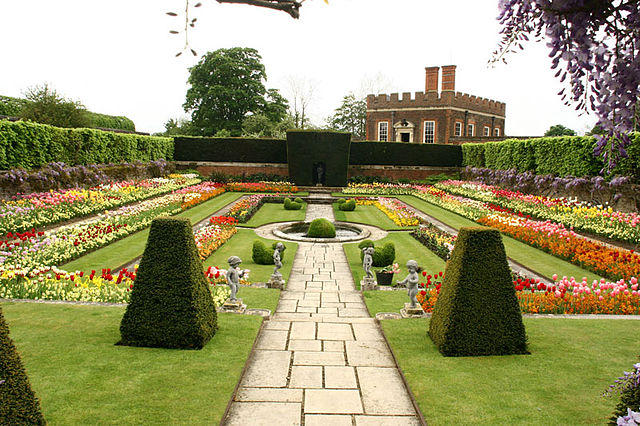In gardening, a garden room is a secluded and partly enclosed space within a garden that creates a room-like effect. Such spaces have been part of garden design for centuries. Generally they are regarded as different from terraces and patios just outside a building, although in practice these are often the parts of a garden that are most used as a room, with tables and chairs. Walls and hedges may form part of the boundaries of a garden room, but plants, usually at least a few feet tall, will do as well. Apart from the entrances to the room, these should normally enclose the space. There may be furniture, especially for sitting down, but this is not essential.
The "Queen Elizabeth II Rose Garden", Titsey Place, planted in 2008
"Dutch-style" garden at Hampton Court Palace
"Desseins de Cabinets et Salons pour des bosquets", illustration from La Théorie et la pratique du jardinage, Dezallier d'Argenville, 1709
Dumbarton Oaks, Washington DC, the "Pebble Garden" in April
Garden design is the art and process of designing and creating plans for layout and planting of gardens and landscapes. Garden design may be done by the garden owner themselves, or by professionals of varying levels of experience and expertise. Most professional garden designers have some training in horticulture and the principles of design. Some are also landscape architects, a more formal level of training that usually requires an advanced degree and often a state license. Amateur gardeners may also attain a high level of experience from extensive hours working in their own gardens, through casual study, serious study in Master gardener programs, or by joining gardening clubs.
Curved garden paths are a common form of hardscaping
Alignment of several compost piles on a composting facility in France
Naturalistic planting design
Garden chairs in Rosenneuheitengarten Beutig in Baden-Baden, Germany








